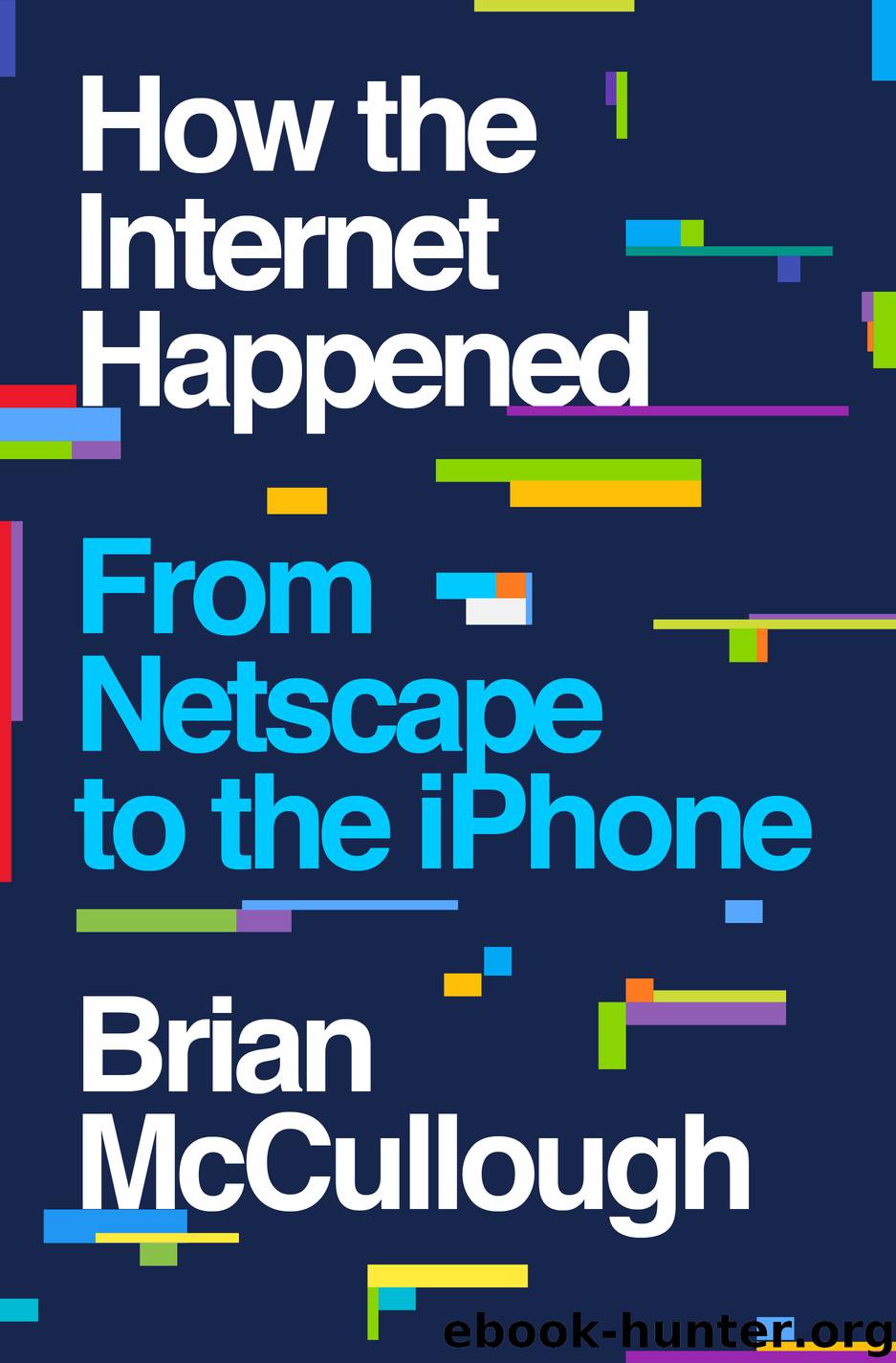How the Internet Happened by Brian McCullough

Author:Brian McCullough
Language: eng
Format: epub, mobi
Tags: Epub3
ISBN: 9781631493089
Publisher: Liveright
Published: 2018-08-18T00:00:00+00:00
12
RIP. MIX. BURN.
The iPod, iTunes and Netflix
At the turn of the century, Apple was not anywhere close to the technology behemoth it is today. In fact, Apple was dangerously close to bankruptcy before its original cofounder Steve Jobs came back to Apple and saved the company. Because Apple was such a niche player in its main market, personal computers, it didn’t have much of a role in the first part of the Internet Era. In the late 1990s, Apple’s share of the computer market in the United States fell below 3%.1 The dot-com world was a Windows world, and so Apple simply wasn’t a company Internet players paid much attention to.
It’s legendary now how Jobs returned to Apple, ruthlessly streamlined its product lines by killing extraneous projects, brought in a young executive named Tim Cook to turn Apple’s supply-chain and manufacturing processes into the envy of the technology world, and embraced a then-obscure industrial designer named Jonathan “Jony” Ive to churn out innovative and beautifully crafted computers that stood out from the dull beige boxes produced by the likes of Dell and Compaq. The product that would change Apple’s fortunes was the iMac, the Ive-designed translucent and colorful computer that debuted in 1998 and would become Apple’s biggest hit in a decade. The “i” in iMac was meant to suggest an innovative, but also individualized, device—a return to the “personal” in personal computing. But the “i” was also meant to suggest “Internet.”2 In a time of near-total Windows domination, Jobs and Apple struck on the idea of rebranding their Macs as machines uniquely designed for the Internet Era.
Jobs wanted Macs to become the “digital hub” in a forthcoming media utopia that would include then-novel gadgets like DVD players, digital cameras, digital camcorders, personal digital assistants and more. The Mac would be the central machine that would help manage and empower all the other gadgetry. To this end, Apple began releasing a whole suite of Apple-produced (and Macintosh-exclusive) software applications to make the digital hub a reality, including iDVD, iPhoto, iWeb and GarageBand.
But, thanks to Napster, digital music was all the rage. The next logical step in the digital-hub strategy would be to create a killer application for digital music, for MP3 files. One of the more popular Mac applications for MP3s was a Winamp-like digital jukebox called SoundJam, which was developed by two former Apple engineers. In March of 2000, Apple purchased SoundJam and turned it into an application called iTunes, which was unveiled at the Macworld trade conference on January 9, 2001.3 iTunes became the flagship of Apple’s digital hub. Combined with the new CD burners that Apple began to ship in its computers, users were soon encouraged to “Rip. Mix. Burn.” In other words, digitize your CD collection, create playlists and mix songs like you did on programs like Winamp, and then burn CDs of your choosing.
Steve Jobs intuited that music was the key spoke in the wheel that was the digital hub. But on the outer edge
Download
How the Internet Happened by Brian McCullough.mobi
This site does not store any files on its server. We only index and link to content provided by other sites. Please contact the content providers to delete copyright contents if any and email us, we'll remove relevant links or contents immediately.
Grails in Action by Glen Smith Peter Ledbrook(9163)
Sass and Compass in Action by Wynn Netherland Nathan Weizenbaum Chris Eppstein Brandon Mathis(8808)
Azure Containers Explained by Wesley Haakman & Richard Hooper(7444)
Configuring Windows Server Hybrid Advanced Services Exam Ref AZ-801 by Chris Gill(7434)
Kotlin in Action by Dmitry Jemerov(7263)
Running Windows Containers on AWS by Marcio Morales(6985)
Microsoft 365 Identity and Services Exam Guide MS-100 by Aaron Guilmette(5402)
Microsoft Cybersecurity Architect Exam Ref SC-100 by Dwayne Natwick(5213)
Combating Crime on the Dark Web by Nearchos Nearchou(4982)
The Ruby Workshop by Akshat Paul Peter Philips Dániel Szabó and Cheyne Wallace(4671)
Management Strategies for the Cloud Revolution: How Cloud Computing Is Transforming Business and Why You Can't Afford to Be Left Behind by Charles Babcock(4527)
Python for Security and Networking - Third Edition by José Manuel Ortega(4233)
The Age of Surveillance Capitalism by Shoshana Zuboff(4210)
Learn Wireshark by Lisa Bock(4123)
The Ultimate Docker Container Book by Schenker Gabriel N.;(3888)
Learn Windows PowerShell in a Month of Lunches by Don Jones(3681)
DevSecOps in Practice with VMware Tanzu by Parth Pandit & Robert Hardt(3568)
Windows Ransomware Detection and Protection by Marius Sandbu(3543)
Blockchain Basics by Daniel Drescher(3507)
